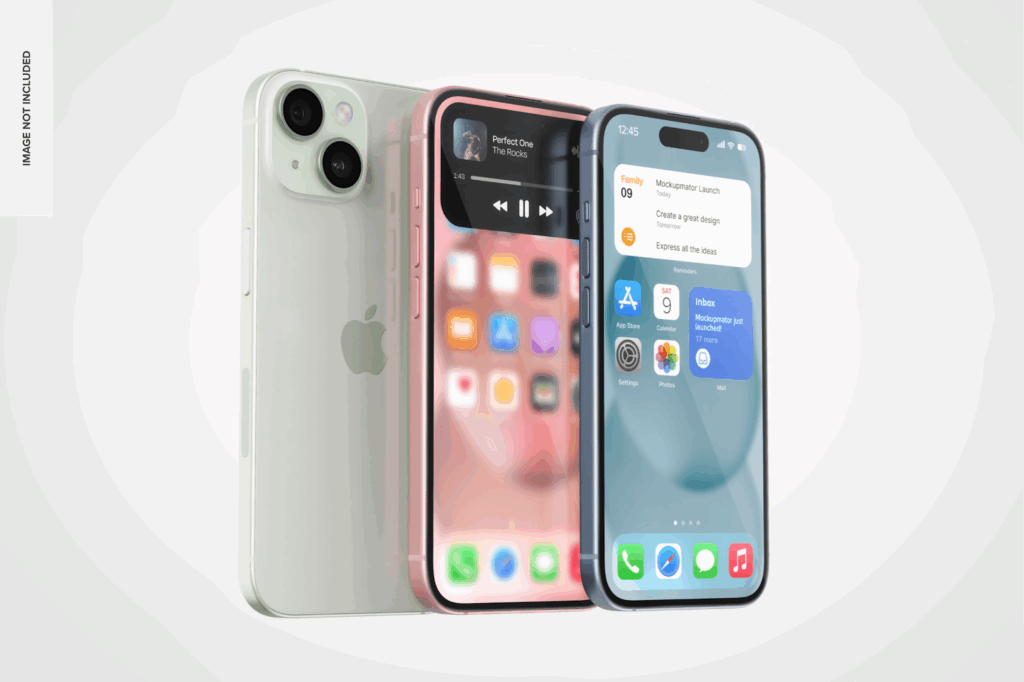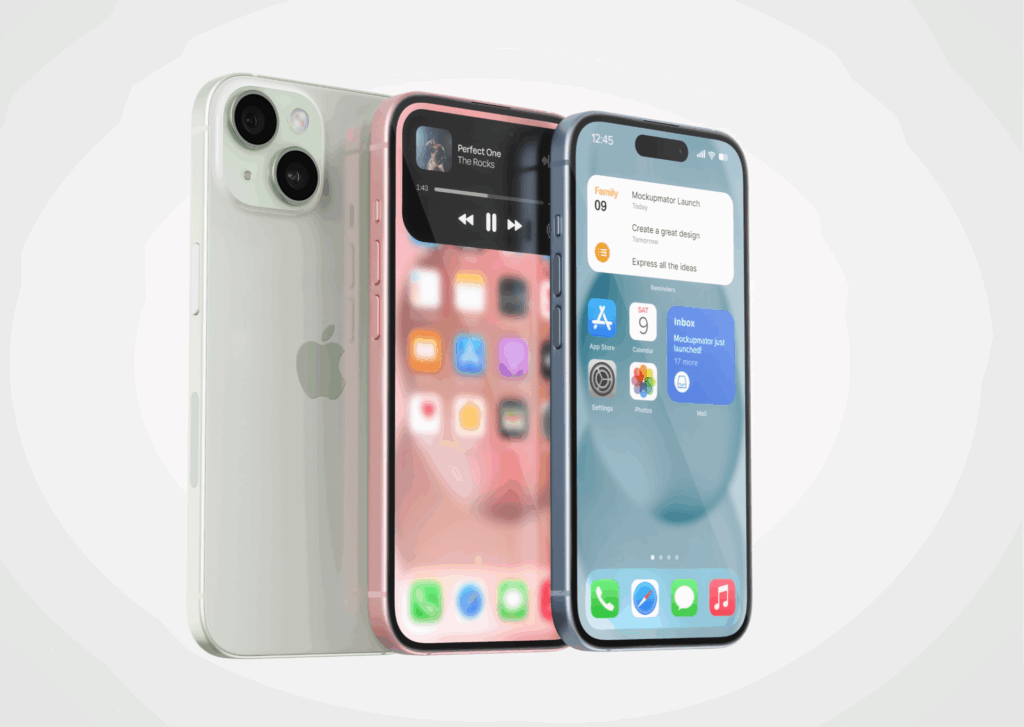The new models introduced in the market have incredible technologies that make smartphones a highly competitive industry. iPhone display types are quite popular when it comes to new innovations.
As Apple launches new models almost every year, there are multitudes of iPhone display types available in the market. In this blog, we have discussed in depth about display types and how to buy them.

Key Takeaways
- iPhones mainly use two types of displays: LCD and OLED technologies that vary from model to model. With LCD being usually used in the older models and OLED being frequently used in the latest models for its better performance and efficiency.
- Apple has set a standard in the smartphone world by coming up with its marvellous Super Retina XDR displays. It has boosted the user experience with higher outdoor brightness, intense blacks, vivid colors, exceptional colour accuracy, and energy efficiency.
- By using LTPO in the new models, the company has effectively reduced the battery drainage issue for users. It also enhanced the ProMotion’s ability to offer an off-screen refresh rate, hence a smoother screen option.
- The type of screen varies from model to model. In case of wear and tear, the user can simply get the screen replaced or repaired. There is a huge range of suppliers available that offer a huge variety of screen displays compatible with different models.
What Is an iPhone Display Type
The iPhone display type refers to the screen technology used to produce visuals on the device. There are two main types of iPhone displays: LCD and OLED. LCD (Liquid Crystal Display) was long considered the standard for iPhones, but Apple has since introduced advanced OLED (Organic Light-Emitting Diode) displays in its newer models.
While LCD technology relies on liquid crystals and a backlight to display images, OLED screens use organic compounds that emit light when an electric current passes through them. This allows OLED displays to deliver deeper blacks, brighter colors, and improved contrast compared to traditional LCD screens.
Main iPhone Display Technologies
LCD (Liquid Crystal Display)
LCD is a quite reliable screen technology in the smartphone market. It usually comes in older models from iPhone 6 to iPhone 11. The usage of backlight is particularly where it differs from other screen display variations. Due to its durability, there is a huge demand for LCD screens in the market despite it being an older technology.
LCD screens are less prone to burn-in. Thus, it is a better option if the consumers work a lot with static applications. A lot of iPhone LCD displays offer quite satisfactory color accuracy and provide broad viewing angles. LCD screens are energy efficient and produce less heat.
Although the iPhone LCD display shows great performance despite being an older technology, it still has its limitations compared to the upcoming technologies. LCD displays can’t produce the deep blacks, have less vibrant colours, and may lack some advanced features.
The price of the screen can depend on various factors, including models, source, quality, and more. It ranges between 11$ to 18$ per unit if bought in bulk quantity. So, buying in bulk can benefit retailers and wholesalers with the low cost and high margins. You can also look up the internet to get an overall idea of what the replacement charges for an iPhone screen are.
OLED (Organic Light Emitting Diode)
Apple was first in the industry to come up with OLED screen technology. The display quality of the OLED screen is quite higher in comparison to LCDs. Apart from rich colors and deeper blacks, it also has exceptional motion performance.
These screens can be a great option for performing day-to-day tasks, professional work, and content creation. Due to less power consumption, it enhances your battery performance. Despite its versatile features as compared to LCDs.
Super Retina and Super Retina XDR
Apple set a new benchmark in the smartphone world when it came up with Super Retina and Super Retina XDR. The super Retina was used in iPhone X, iPhone XS, iPhone X Max Pro, and then in iPhone 11 and onwards.
The crisp colors, deep blacks, higher contrast ratios, and exceptional resolution leave the older display variations in dust. Although this technology outperforms every other display technology in the industry, there is no hidden fact that it is a bit more fragile and expensive. Repairing and replacing can be quite difficult for an average consumer.
Liquid Retina & Retina HD

Liquid retina and Retina HD were Apple’s trademarks, usually found in the older generation of iPhones. Liquid Retina displays are basically LCD display technology. It comes with a pixel density of 326 per inch, along with a contrast ratio of 1400:1. It has a uniform backlight that provides consistent, vibrant colors and a high contrast ratio.
Retina HD is basically a high-density pixel LCD. The higher pixel density makes it impossible for the naked eye to see the individual pixels at certain distances, so it shows a high resolution of the image on the screen. Liquid Retina is almost similar to Retina HD, but liquid retina incorporates the anti-aliasing technology. So, it provides a more immersive viewing experience with the use of thinner bezels.
LTPO & ProMotion Displays
Energy efficiency is one of the top priority features of smartphones these days. LTPO (Low-Temperature Polycrystalline Oxide) displays have solved this problem for iPhones.
LTPO is basically a semiconductor merged into the display hardware. It is usually used as a backplane in an OLED display, which is a light-emitting screen display found in the latest smart devices. It enhances the phone’s performance by increasing the dynamic refresh rates without draining the battery.
For instance, LTPO enabled in iPhone 13 and iPhone 13 Pro allows the ProMotion’s capacity to dial the screen refresh rate in the range of 10 times per second (10Hz) to 120Hz. It comes in the latest models of iPhones, from iPhone 13 to the latest iPhone 17.
iPhone Display Type by Model (Quick Reference Table)
| Model | Display Type | Size | Notes |
| iPhone 6 | Retina LCD | 4.7 inch | good performance |
| iPhone 6 plus | Retina LCD | 5.5 inch | higher Brightness |
| iPhone 7 | Retina LCD | 4.7 inch | Color Accuracy |
| iPhone 7 Plus | Retina LCD | 5.5 inch | high resolution |
| iPhone 8 | Retina LCD | 4.7 inch | wide color and 3D touch |
| iPhone 8 Plus | Retina LCD | 5.5 inch | True Tone display |
| iPhone X | Super Retina LCD | 5.8 inch | wide screen and rounded corners |
| iPhone 11 | Liquid Retina LCD | 6.1 inch | Haptic Touch |
| iPhone 11 Pro | Super Retina XDR OLED | 5.8 inch | HDR and high contrast ratio |
| iPhone 11 Pro Max | Super Retina XDR OLED | 6.5 inch | Fingerprint-resistant oleophobic coating |
| iPhone SE | Retina HD | 4.7 inch | Latest model with LCD and touch ID |
| iPhone 12 | Super Retina XDR OLED | 6.1 inch | Higher Brightness |
| iPhone 12 Pro | Super Retina XDR OLED | 6.7 inch | Dolby Vision |
| iPhone 13 | Super Retina XDR OLED | 6.1 inch | 458 psi pixel density |
| iPhone 13 Pro | Super Retina XDR OLED | 6.1 inch | Ceramic shield front cover |
| iPhone 14 Pro | Super Retina XDR with ProMotion | 6.1 inch | First model with dynamic island |
| iPhone 14 Plus | Super Retina XDR with ProMotion | 6.7inch | Same display but in larger size |
| iPhone 15 Pro | Super Retina XDR with ProMotion | 6.1 inch | 120 Hz refresh rate |
| iPhone 15 Pro Max | Super Retina XDR with ProMotion | 6.7 inch | Same 120 Hz refresh rate |
| iPhone 16 Pro | Super Retina XDR OLED | 6.3 inch | ProMotion display with 120 Hz |
| iPhone 16 Pro Max | Super Retina XDR OLED | 6.9 inch | Includes ProMotion |
| iPhone 17 Pro | LTPO Super Retina XDR OLED | 6.3 inch | 120 Hz ProMotion |
| iPhone 17 Pro Max | Super Retina XDR OLED | 6.9 inch | 3000 nits outdoor performance |
How Display Type Affects Replacement and Sourcing

There are two main suppliers of iPhone display types: OEM and third-party manufacturers.
OEM (Original Equipment manufacturers) screens are the display screens that are originally produced by Apple itself, although a third-party company can also be involved in the production as well. Whereas in the aftermarket, screens are directly manufactured by a third-party manufacturer.
OEMs and aftermarket offer a huge range of iPhone screen displays due to the rapidly increasing demand in the consumer market. iPhone screen material can also have a huge impact on the cost of the screen display.
So, despite the vast availability, there can be confusion on which could be a better choice for retailers to purchase the screens with better compatibility, superior quality, lower rates, and higher profit margins.
Where OEMs offer iPhone screens with higher quality, colour contrast, and superior fits, but that doesn’t usually mean that aftermarket screens are of lower quality. Although they can be more affordable as compared to the OEM screen displays. The prices, however, exclusively depend on the iPhone screen you want to purchase. For instance, there is a considerable difference between the LCD and OLED screen displays.
Where the former is more inexpensive due to low production costs and materials as compared to the latter. When ordering the display types, you need technology and quality. Companies and wholesale suppliers can offer various versions of a particular screen of a particular iPhone model. For earlier generation iPhones, look up the LCD screen, usually Liquid Retina and Retina HD. And for newer generation iPhones, they go for Super Retina XDR.
Choosing the Right Display for Your Business
There are different factors that need to be considered before purchasing the iPhone screens in bulk. It varies from seller to seller. For instance, as a wholesaler, the focus should be on the quality of the screen, demand of the display type, higher the compatibility higher the sales. Most of all, the source reliability.
If you are thinking of buying the screen displays for your repair shop, be mindful of the screen quality, source reliability, and cost effectiveness. The reliability of the source is a crucial factor that will eventually lead to consumer satisfaction. We have a solution to all your problems. You can simply browse our wholesale iPhone displays at https://sqlcd.com
Frequently Asked Questions
- What’s the difference between OLED and LCD iPhone screens?
The LCD screen displays are frequently used in the earlier generation iPhones, but the latest ones have the modern OLED technology for a more immersive experience. OLED screen displays use their own light for individual pixels. On the other hand, LCD uses backlight. The OLED offers more vibrant colors and is more power efficient.
- Which iPhones use OLED displays?
OLED display comes in the new models of the iPhone. It was first used in the iPhone X, XS, XS Max, and is now continued up to the newest iPhone 17.
- Can I replace an OLED screen with an LCD?
While replacing the iPhone screen, the most important factor to consider is compatibility. You can replace the OLED iPhone screen display with an LCD, but it is not a great choice. As the manufacturers design every model with a specific screen type. So replacing OLED with LCD can eventually affect the overall display performance of your iPhone.
- What’s Super Retina XDR?
Super Retina XDR is the futuristic display Apple has come up with for its iPhone. Present in the newer iPhone models, this innovative technology takes the user’s visual experience to the next level. It has high brightness, a wide colour gamut,
Conclusion
iPhone dominates the smartphone market with different iPhone display types. Understanding the different iPhone display types, including LCD, OLED, and Super Retina, helps you make smarter choices when buying or upgrading your device. Whether you prioritize battery life, color accuracy, or screen quality, knowing how these technologies differ ensures you get the best value for your needs. As Apple continues refining its display technology, future iPhones will likely bring even more stunning visuals and efficiency improvements.



